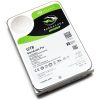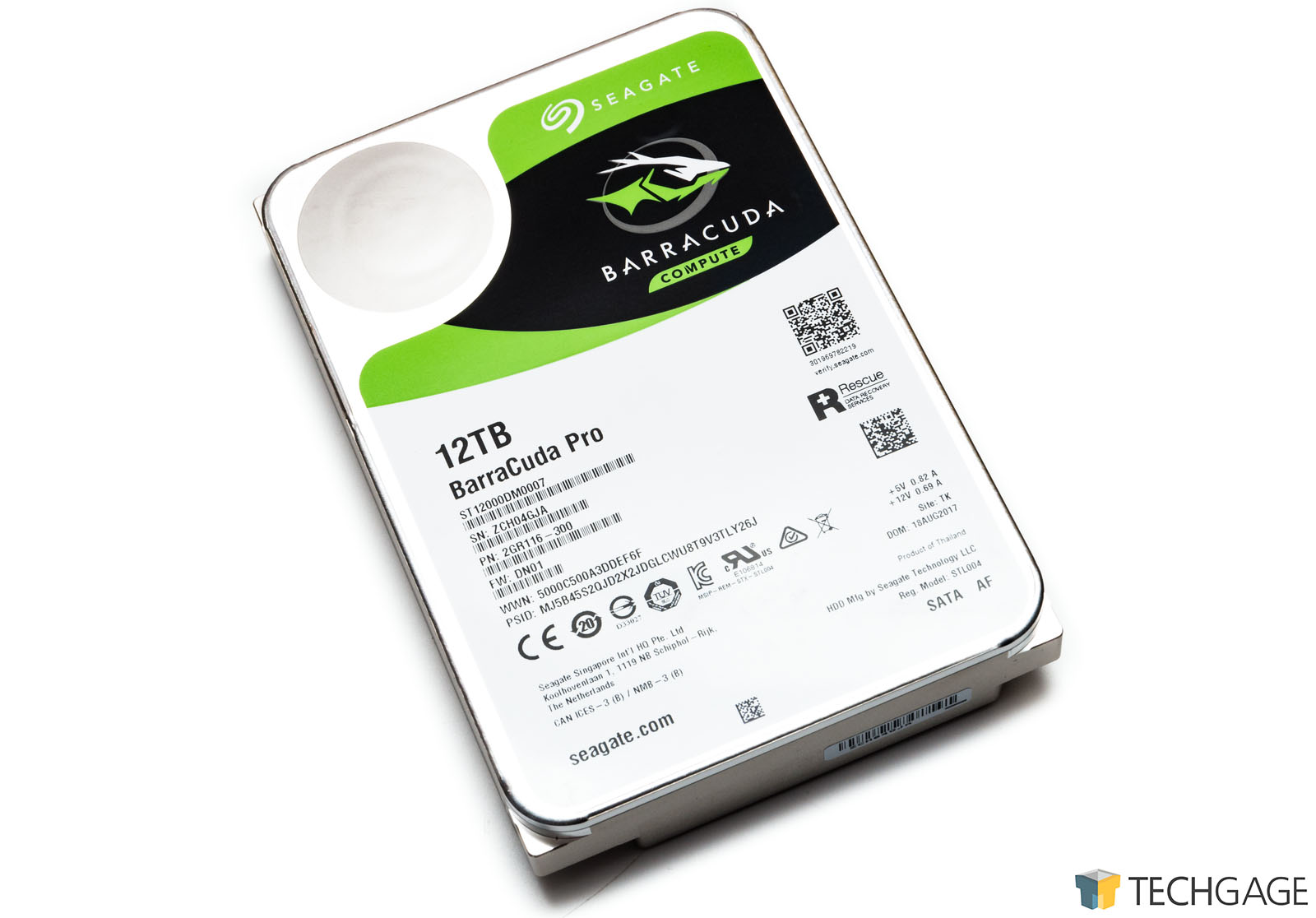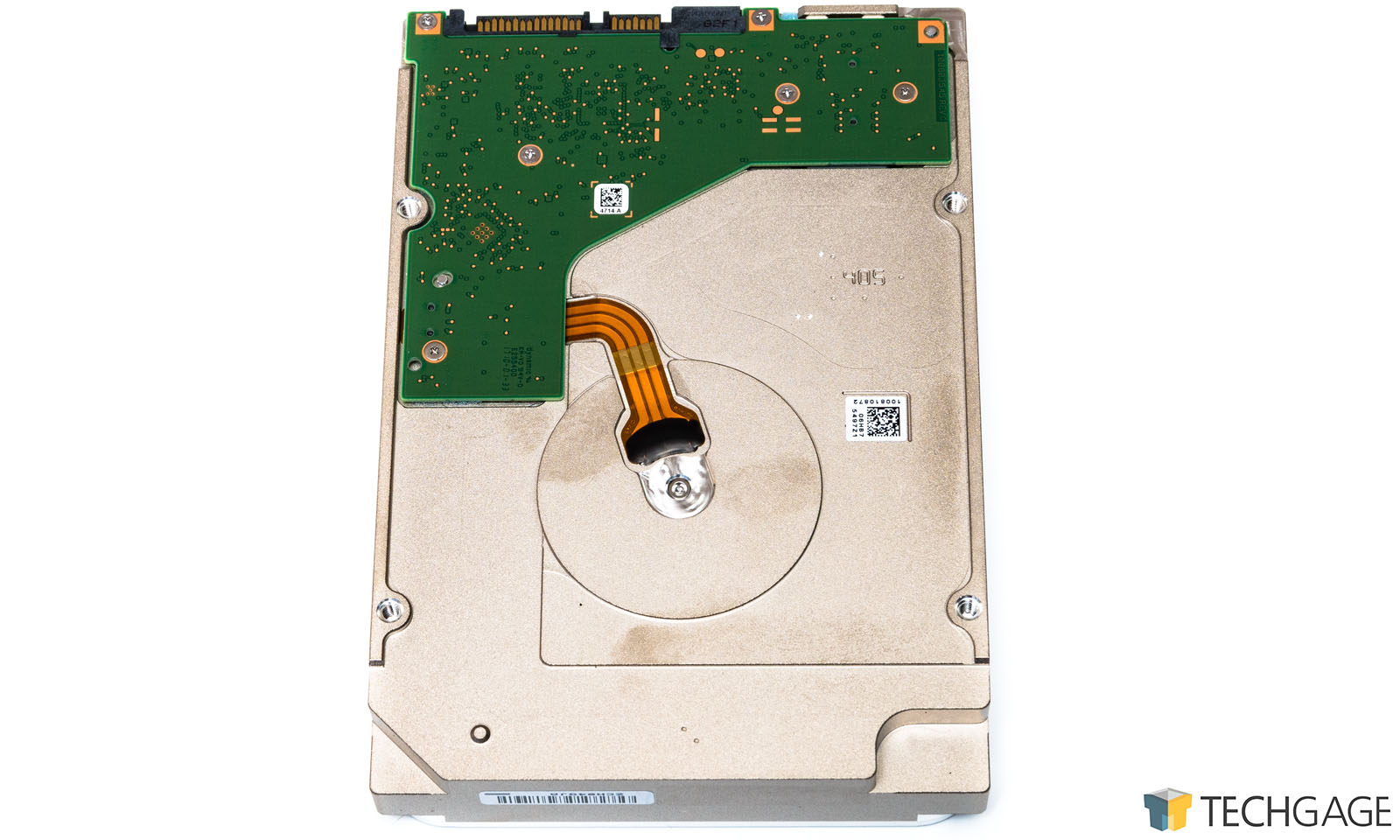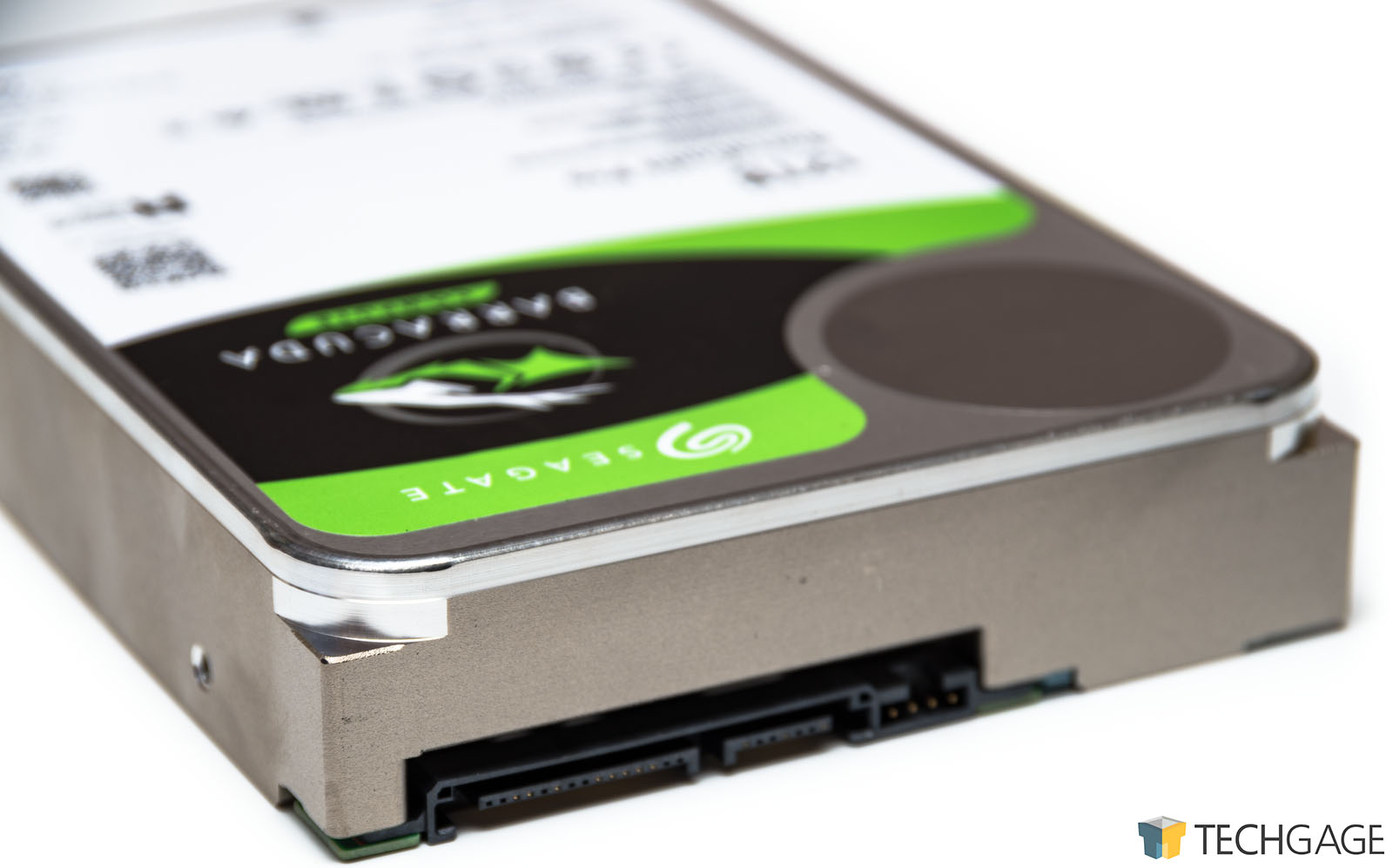- Qualcomm Launches Snapdragon 4 Gen 2 Mobile Platform
- AMD Launches Ryzen PRO 7000 Series Mobile & Desktop Platform
- Intel Launches Sleek Single-Slot Arc Pro A60 Workstation Graphics Card
- NVIDIA Announces Latest Ada Lovelace Additions: GeForce RTX 4060 Ti & RTX 4060
- Maxon Redshift With AMD Radeon GPU Rendering Support Now Available
Seagate Barracuda Pro 12TB HDD Review

With games getting bigger and movies switching to 4K resolutions, the amount we need to store for our digital lives is forever increasing. While cloud services help, sometimes you need something local to keep everything on. We take a look at one of Seagate’s highest density drives on the market, the Barracuda Pro 12TB.
Page 1 – Introduction And Testing Methodology
In our media-rich world, storage is in constant demand. Cloud services and video streaming have helped curb the need for huge amounts of local storage, but not everyone has the bandwidth or desire to keep everything on someone else’s computer. Hard drives are still the cheapest option for bulk and infrequent access storage, something Seagate has provided for many years.
A couple of months ago, Seagate updated its range of storage solutions with 12TB drives from its NAS ready IronWolf range, and under review today, Barracuda Pro desktop drives. While IronWolf is meant for RAID-enabled disk controllers due to error correction limits and vibration dampening mechanisms, the Barracuda Pro is about speed for local storage pools on workstations and desktops.
It’s certainly been a while since we’ve taken a look at any HDDs, since a lot of the market is switching over to solid-state storage. With this in mind, we have a new test system in place to manage this, since the old system no longer exists. During this time, drive densities have exploded. It doesn’t feel so long ago when 2TB drives were causing issues due to the MBR partition tables unable to cope with such large densities, and here we are now, looking at a 12TB drive.
The Barracuda Pro 12TB under review today, is a 7200RPM SATAIII 8-platter PMR, helium filled drive, built for high performance (for a mechanical drive) and high density for local storage on desktops. While its speed won’t match that of an SSD, its density and price will more than make up for it. Backed by a 5 year warranty and a 2-year data recovery service included, this also has some durability too. For a desktop drive, this is one of the highest capacity drives currently on the market, with nearly all others being for NAS or Enterprise storage solutions.
With such large density drives, you need to be careful about which type it is, denoted by the use of Perpendicular Magnetic Recording (PMR) and Shingled Magnetic Recording (SMR). This Barracuda Pro is a PMR drive, which means it can be used with any standard disk controller. The SMR drives are often found in enterprise disk drives for archiving only, as they have very poor rewrite speeds.
Helium in hard drives isn’t new, and it’s something we’ve covered before, but here’s a quick summary of why. Disk drives are typically nitrogen/air-filled, as they require some form of gas or air for the read/write heads to stay floating above the spinning platter. Nitrogen is quite a dense gas compared to helium, so there is a certain amount of drag involved on the platters and motor. Switching to helium means it lowers the drag, allowing the motor to spin faster, or in the case of high-density drives, attach more platters to the motor. This is why we’ve gone from 4-6 platters on older drives, to 8 and even 9 on modern ones. More platters not only increases the density, but also the overall performance in sequential reads/writes (providing the controller can keep up).
Testing Methodology
The test system for this drive is not ‘new’ but is more than enough for hard drive testing. The drive is hooked up to a SATA port connected to the PCH, using an Intel disk controller. Windows 10 Pro is installed on its own SSD, and any real-world file transfers are pulled from a separate SSD to prevent any interference from the OS drive.
The suite we’re using isn’t as extensive as what we would use for SSDs, simply because IOPS and queue depths are not a functional metric any more for HDDs, since SSDs have superseded them by an insurmountable margin. However, sequential read/write and a certain amount of random access is still important. As such we’re using synthetic tests from CrystalDiskMark, HD Tune, and Futuremark’s PCMark 8 storage benchmark. Real-world testing is performed with Window’s built-in tool called Robocopy, which transfers our long-standing mixed-media 50GB backup, consisting of files of various sizes.
All tests are performed a minimum of three times, or more if there are any irregularities, which will be mentioned if necessary.
Full system specifications are available in the table below:
| Techgage Hard Drive Test System | |
| Processor | Intel Core i7-4770K @ Stock |
| Motherboard | ASUS Z97-AR |
| Memory | Corsair Vengeance 16GB DDR3-2133 |
| Graphics | IGP |
| Audio | Onboard |
| Storage | OS Drive: Corsair Force LS 120GB SATA 6Gbit/s SSD Source Drive: HyperX Fury 120GB SATA 6Gbit/s SSD Tested Drives: Seagate Barracuda Pro 12TB (ST12000DM0007, 256MB Cache, 7200 RPM) |
| Power Supply | Corsair HX850i 850 Watts |
| Cooling | Cooler Master Hyper 212 EVO |
| Et cetera | Windows 10 Pro 64-bit, Open bench system |
When preparing our HDD testbed for benchmarking, we follow these guidelines:
- No power-saving options are enabled in the motherboard’s EFI.
- AHCI is enabled in the motherboard’s EFI for best performance.
- Only the Intel 6Gbit/s SATA controller is used for test drives.
- The OS is kept clean; no scrap files are left in between runs.
- OS power-saving settings are disabled.
Drives are initialized but left unpartitioned when tested with HD Tune, and are formatted with 4KB cluster sizes for PCMark 8, CDM and real-world testing.
Due to the new test system and a lack of comparative drives at this time, results will be short and should be taken as they are for the time being. However, as more drives are tested, graphs and tables will be populated in future articles.
Support our efforts! With ad revenue at an all-time low for written websites, we're relying more than ever on reader support to help us continue putting so much effort into this type of content. You can support us by becoming a Patron, or by using our Amazon shopping affiliate links listed through our articles. Thanks for your support!











